Fitbit Luxe review
Fitbit Luxe: specs
Price: $149.95
Size: 36.3 x 17.6 x 10 mm
Display: 0.76-inch AMOLED
Battery life: 5 days
Water resistance: 50 meters
GPS: No
The $150 Fitbit Luxe is looking to make fitness tracking a fashion statement. While we’ve seen smartwatches offer lifestyle models as alternatives to their sporty counterparts, the Fitbit Luxe is the first activity band we’ve seen in a long while that’ll pass as wrist candy.
At a glance, the Fitbit Luxe bears a resemblance to many of the best fitness trackers. But the device detailed in this Fitbit Luxe review introduces elevated, jewelry-inspired elements with a color touchscreen and stainless steel casing with metallic finishes. It looks even better paired with a “special edition” link bracelet from Fitbit’s partner designer brand.
We know what you’re wondering: Does Fitbit Luxe trade form for function? Although you won’t find GPS or voice assistants like you might on many of the best Fitbits, the Luxe has Fitbit’s Activity Zone Minutes, sleep tracking, stress management tools and up to 5 days of battery life. You’ll also get a free trial of Fitbit Premium, the company’s advanced health monitoring service.
Fitbit Luxe price and availability
The Fitbit Luxe is available as of this writing for $149.95. That includes the price of the physical tracker in the gold, platinum or graphite casing, plus classic silicone straps. You’ll pay more (about $50) for Fitbit’s in-brand higher fashion straps.
You’ll also have the option for the Fitbit Luxe Special Edition, which comes with a link bracelet from jewelry brand gorjana and costs $199.95. I didn’t get to try the link bracelet out, but it looks like other bracelets I regularly wear.
A neat freebie of Fitbit Luxe is a 6-month trial of Fitbit Premium, which normally costs $9.99 per month. Fitbit Premium offers more advanced personal insights and health programs, plus an extended view of your body metrics over time.
Fitbit Luxe review: Design
While Fitbit’s squircle smartwatches have grown more fashionable, providing metal finishes wapping physical buttons for flush touch controls, the brand’s fitness trackers have held onto an athletic aesthetic. The Fitbit Charge 4, for example, doesn’t look like something you’d want to wear to a nice occasion. Same goes for the Fitbit Inspire 2.
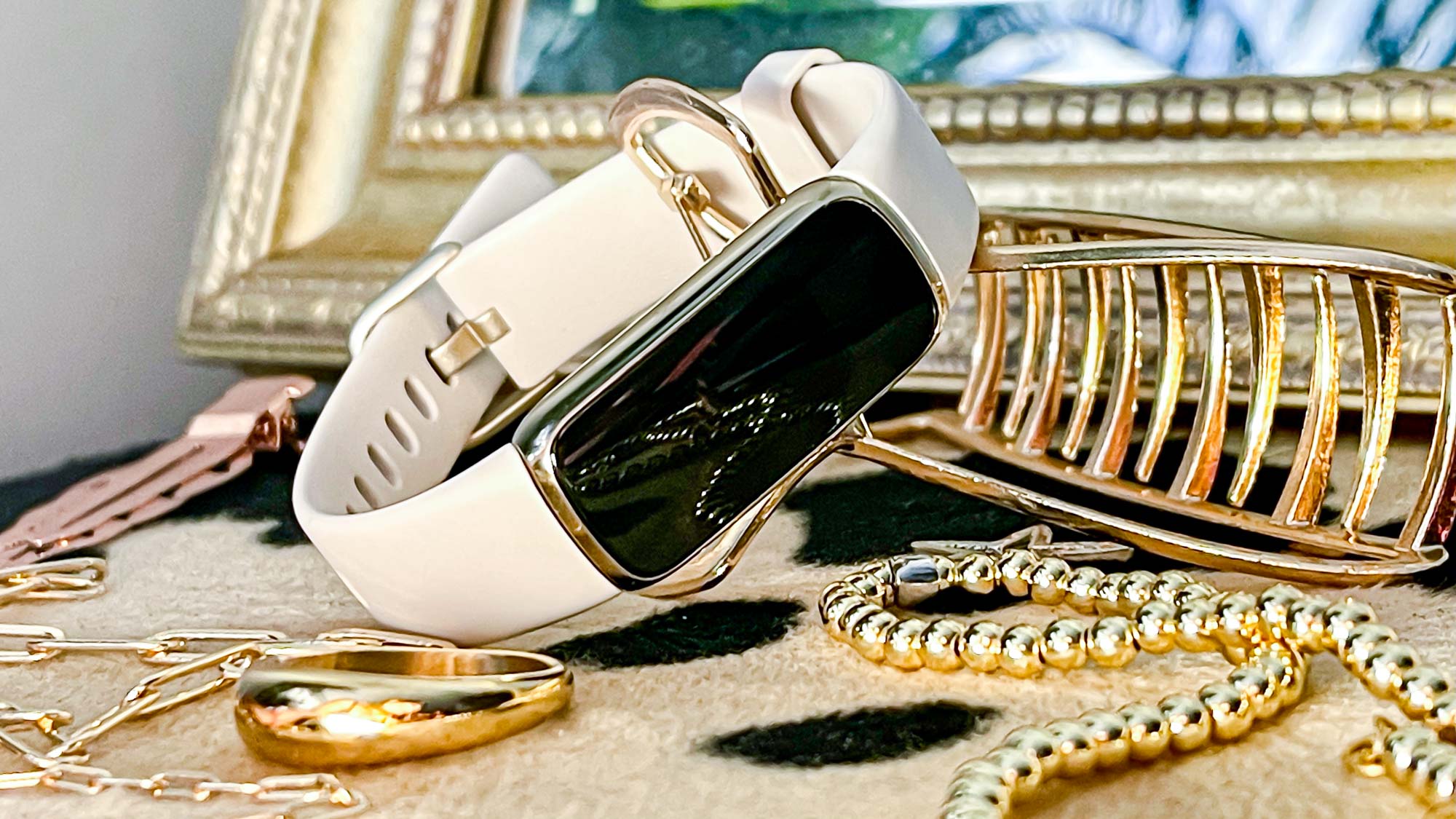
Enter Fitbit Luxe in its metallic casing. In maintaining the oblong display shape, the brand is clearly going for versatility. The screen is large enough to show you all the metrics you’d want to see mid-workout — plus the lightweight build allows a barely-there feel — but from a side view it might be mistaken for jewelry.
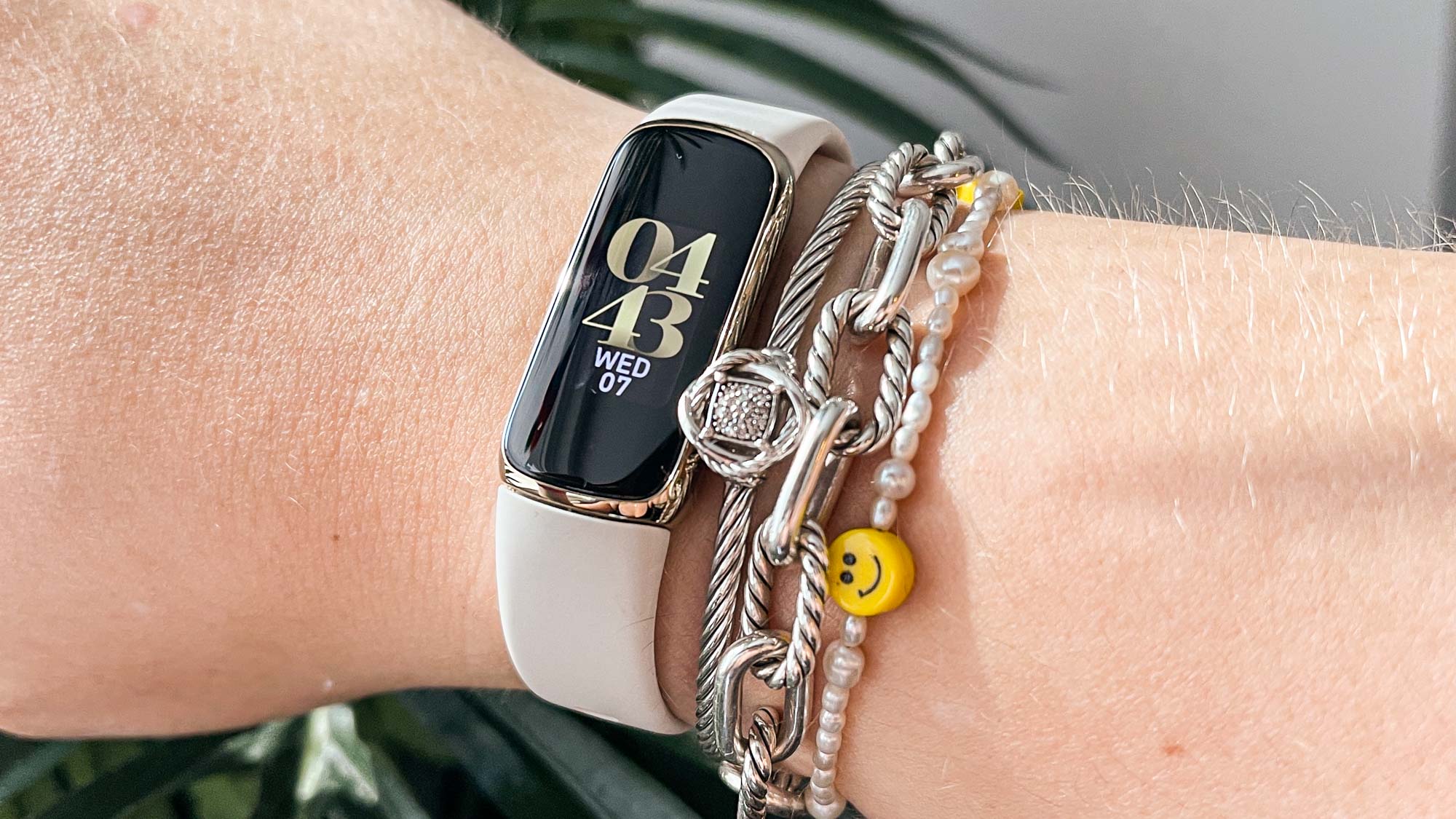
Compared to aforementioned Fitbit trackers, which both have grayscale displays, the Luxe’s vibrant color touchscreen separates it from the pack. Although I wish the 0.76-inch screen was brighter against direct sunlight, the home screen, exercise animations and notifications look great in color. Note that some of the best cheap fitness trackers, like the $50 Amazfit Band 5, have color touchscreens, so it’s not necessarily a premium feature, but we’re glad that Fitbit included it in the Luxe anyway.
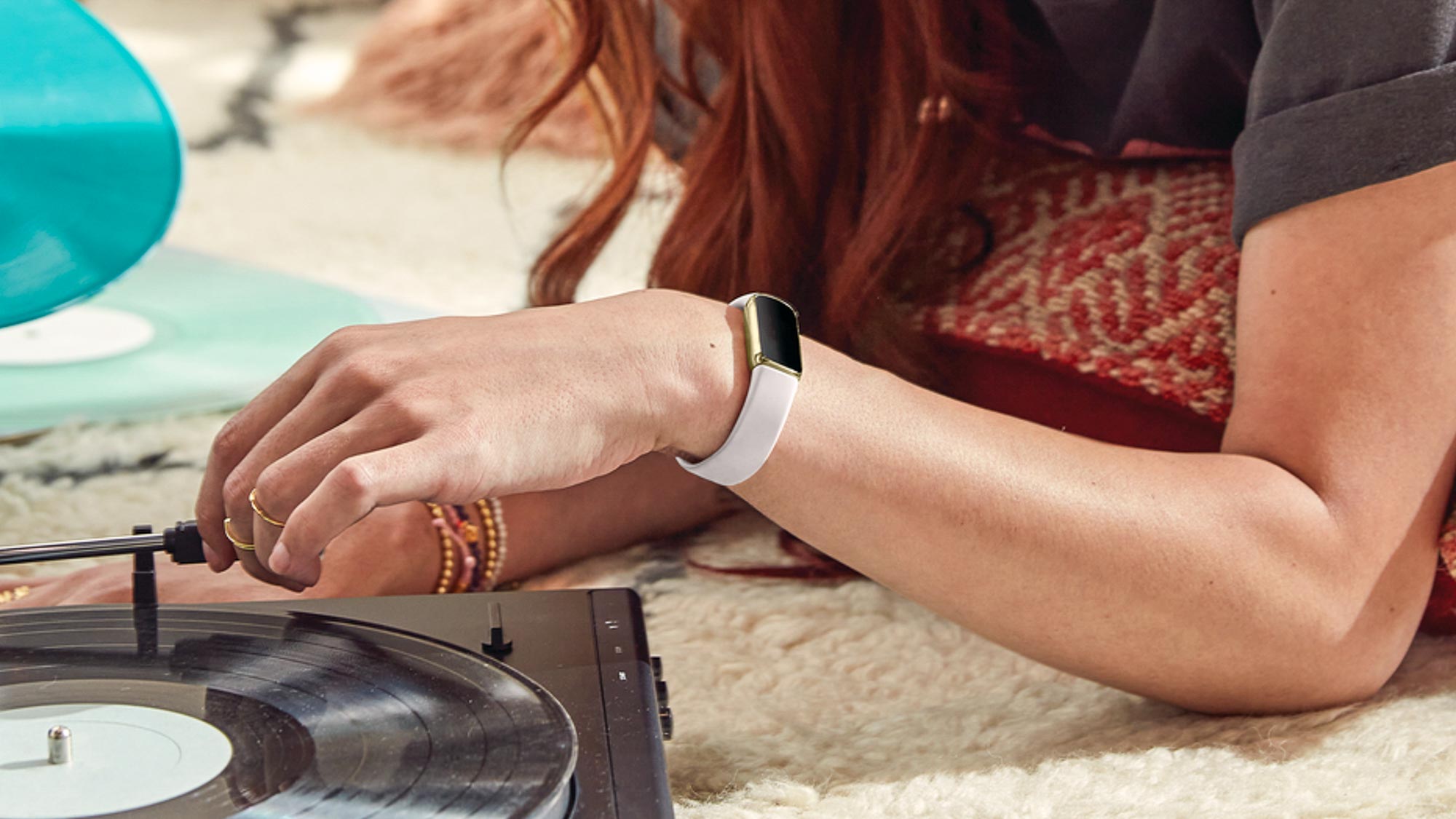
While I stuck to silicone straps since I’m fairly active, a collection of fashion straps add to the Fitbit Luxe’s effect. The in-brand options include leather double-wrap and woven stainless-steel mesh styles.
Fitbit Luxe review: Health and fitness features
First and foremost, Fitbit Luxe is a fitness tracker. It counts your steps, monitors your heart rate and tells you how many calories you burned in a workout. It doesn’t have GPS, so it can’t track your outdoor runs or walks if you leave your phone behind. I’d usually recommend any of the best running watches or best sports watches for seasoned athletes who require personalized training data, so no built-in GPS shouldn’t be a dealbreaker for a casual exerciser.
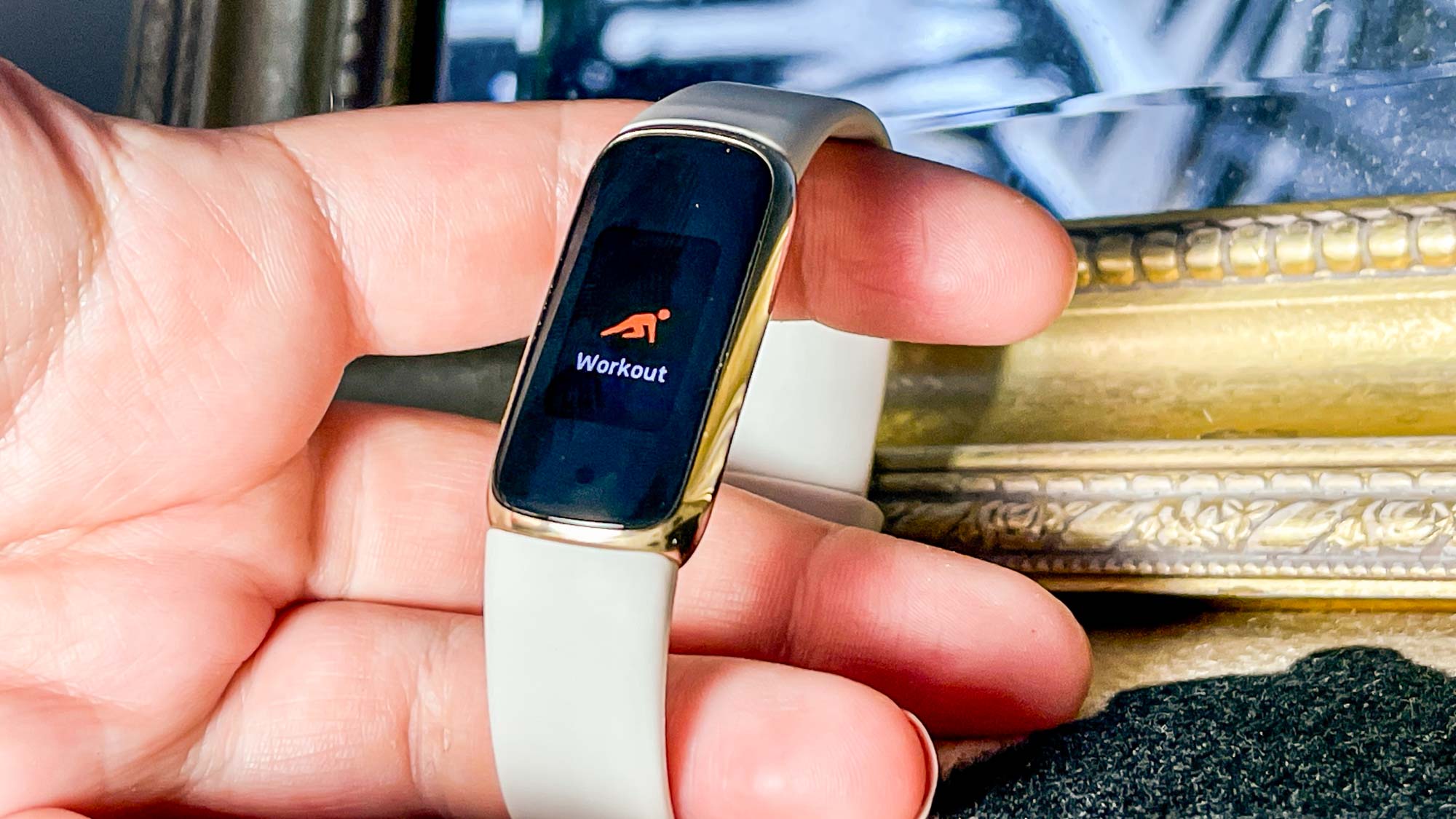
Otherwise, this activity band has more than 20 exercise modes. The Luxe also gets SmartTrack, or automatic workout tracking. It picked up my daily dog walks without me needing to launch a workout, and it should also be able to detect running, elliptical exercise, outdoor cycling, select sports and swimming. It incorrectly guessed I was on the elliptical when I actually — and ambitiously — took the stairs up 10 flights one afternoon, but I could edit the entry in the Fitbit app.
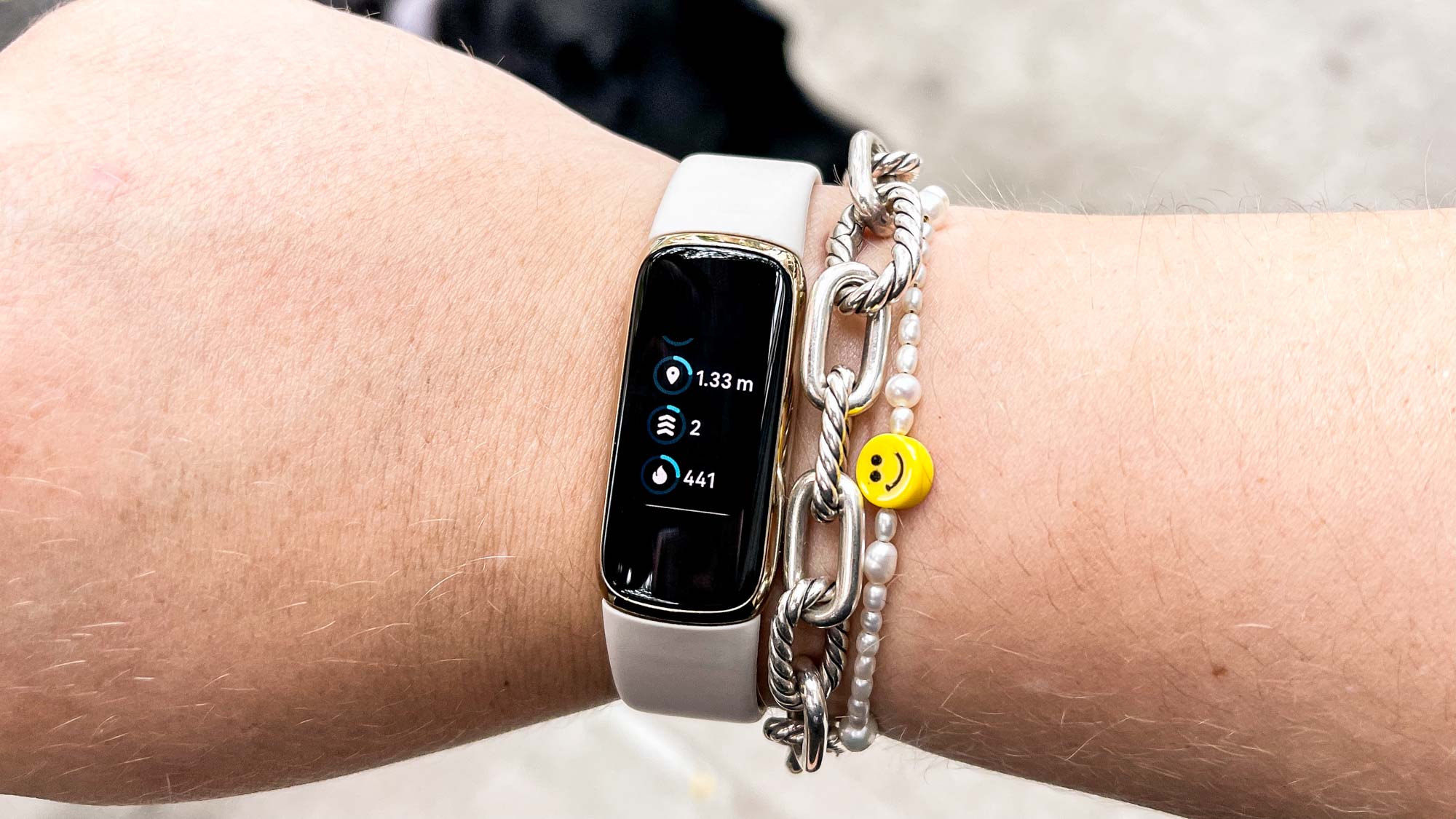
Getting my heart rate up (even if it’s just doing stairs) counts towards Fitbit’s proprietary Active Zone Minutes feature, too. Active Zone Minutes monitors the time you spend in the fat burn, cardio or peak heart-rate zones while exercising. Your mission is to earn the AHA’s and WHO’s recommended 150 Active Zone Minutes each week. I’ve long been a fan of this feature rather than the outdated 10,000 steps threshold, and am excited that such a good-looking device can actually guide me towards my activity goals.
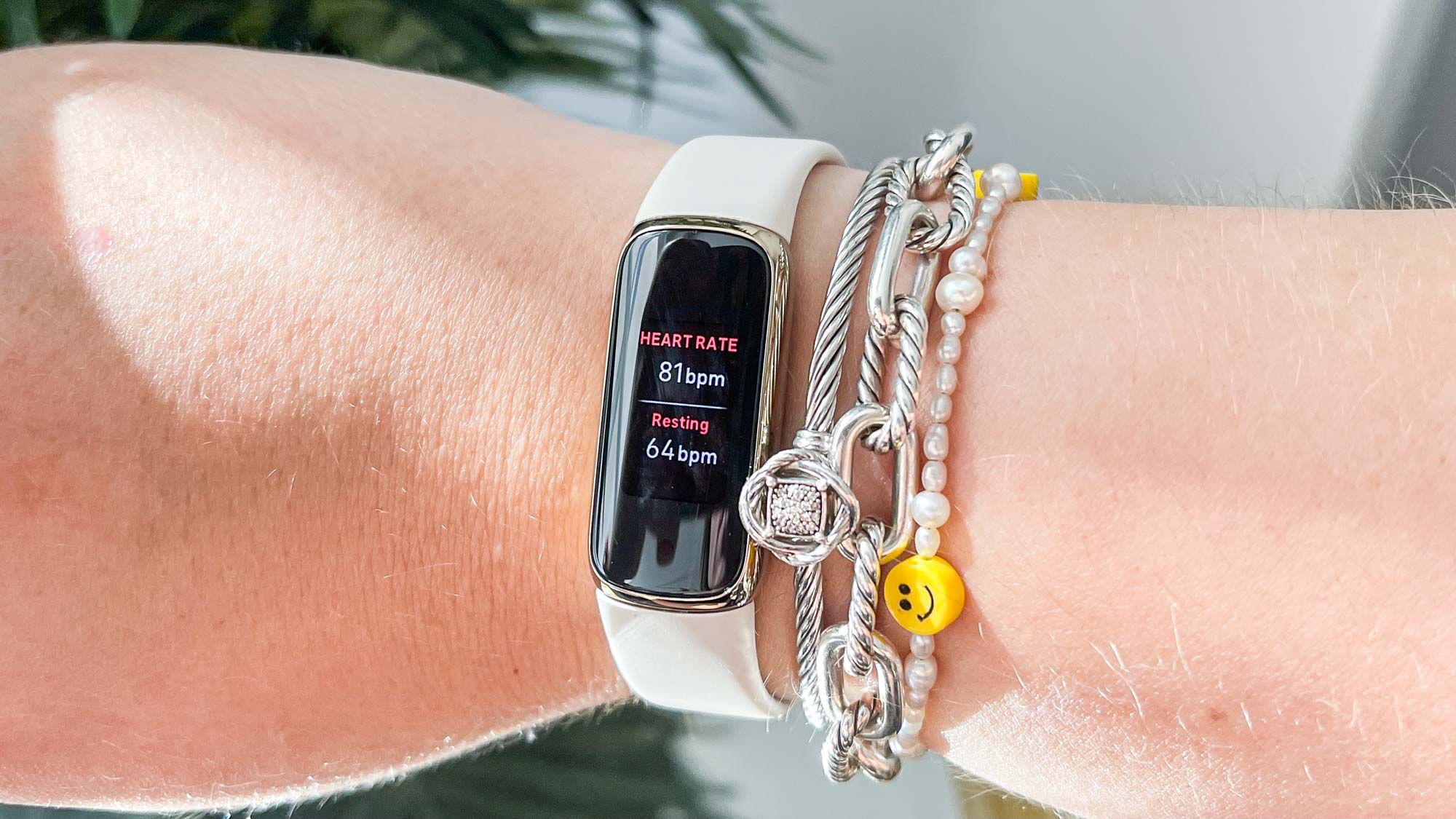
The Fitbit Luxe has the company’s sleep tracking tools, too. When you wear it to bed, it can sense how well you’re resting. In addition to tallies of how much time you spend in different sleep stage cycles, you’ll receive a sleep score. I landed in the 70-90 range (out of 100) every night, Keep in mind that with a Fitbit Premium membership, you’ll unlock more sleep insights and actionable data. SpO2 readings will provide better sleep data, too, though the sensor isn’t live yet on Fitbit Luxe.
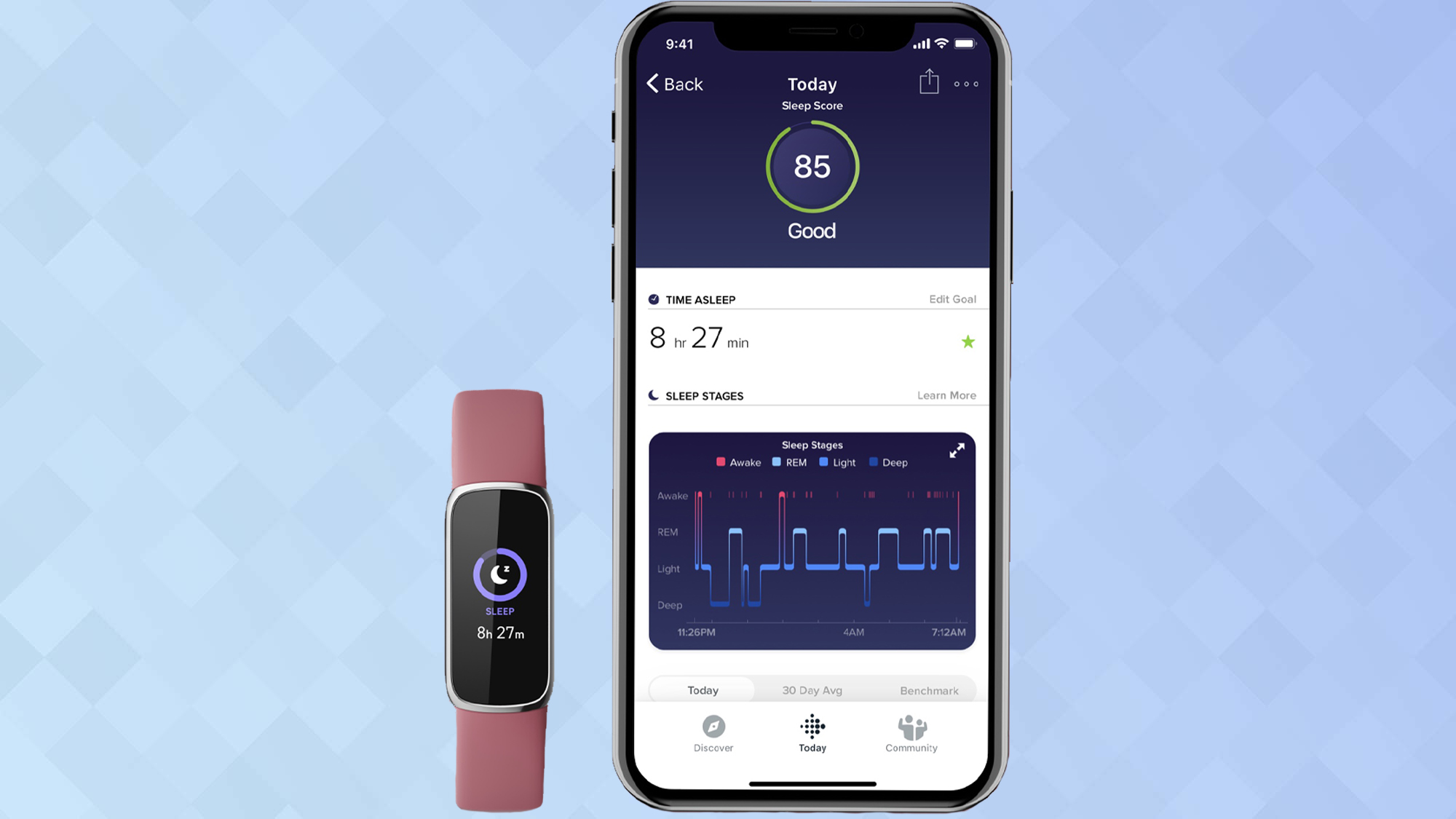
Fitbit Premium is also where you’ll find the bulk of the stress-management tools. The Luxe doesn’t have an EDA sensor like the Fitbit Sense, but you can see your stress management score based on your heart rate, sleep and activity data, as well as manual input of your mood. Then, according to your score, Fitbit provides actionable advice ranging from expert tips to suggested meditation sessions.
I already mentioned you don’t get GPS with the Fitbit Luxe, but you should know it also skips on NFC support. That means you can’t use it for contactless payments. If you’re like me, who grew to rely on NFC at checkout counters during the pandemic, I was a bit disappointed that I couldn’t use Fitbit Pay with my fashionable new fitness tracker.
Luckily, you still get most of the non-health-related tools you’d want. The Fitbit Luxe can be used to set an alarm or timers, and it mirrors your smartphone notifications. I will say dozens of pop-ups on the small screen gets annoying, so I recommend limiting which notifications you want pushed to your wrist in the Fitbit app.
And if you were hoping for a fitness band with a voice assistant built-in, you’ll need to look elsewhere. Unlike the Fitbit Sense or Fitbit Versa 3, the Luxe doesn’t support Google Assistant or Alexa.
Fitbit Luxe review: Battery life
FItbit says the Luxe’s battery should last 5 days, which is a less impressive battery life than some of the company’s other trackers. The Inspire 2 battery life lasts up to 10 days, while the Fitbit Charge 4 lasts up to 7 days.
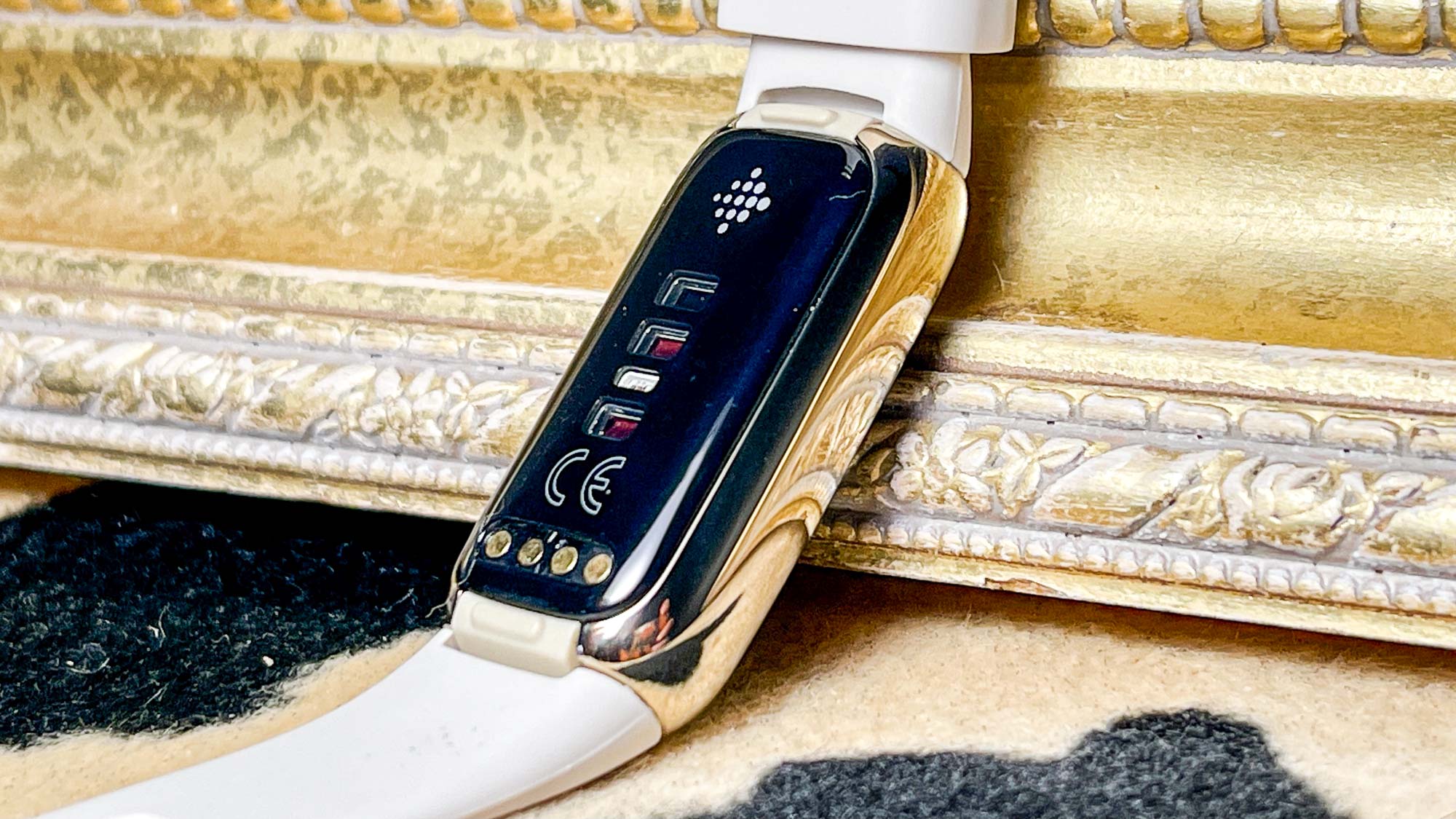
I needed to charge my unit up after just 4 days, but those days included overnight wear for sleep tracking and many hours of pulling GPS data from my phone during outdoor walks. It charged up to 100% from dead in about two hours.
Fitbit Luxe review: Verdict
Don’t let the Fitbit Luxe’s looks fool you. It’s a very capable fitness tracker, especially for activities like walking, yoga and indoor cycling. The small display and lack of GPS don’t make it an ideal companion for serious runners, swimmers or bikers, but any casual exerciser will be satisfied. Plus the Luxe supports a number of sleep and stress tools, embracing a more holistic approach to wellness.
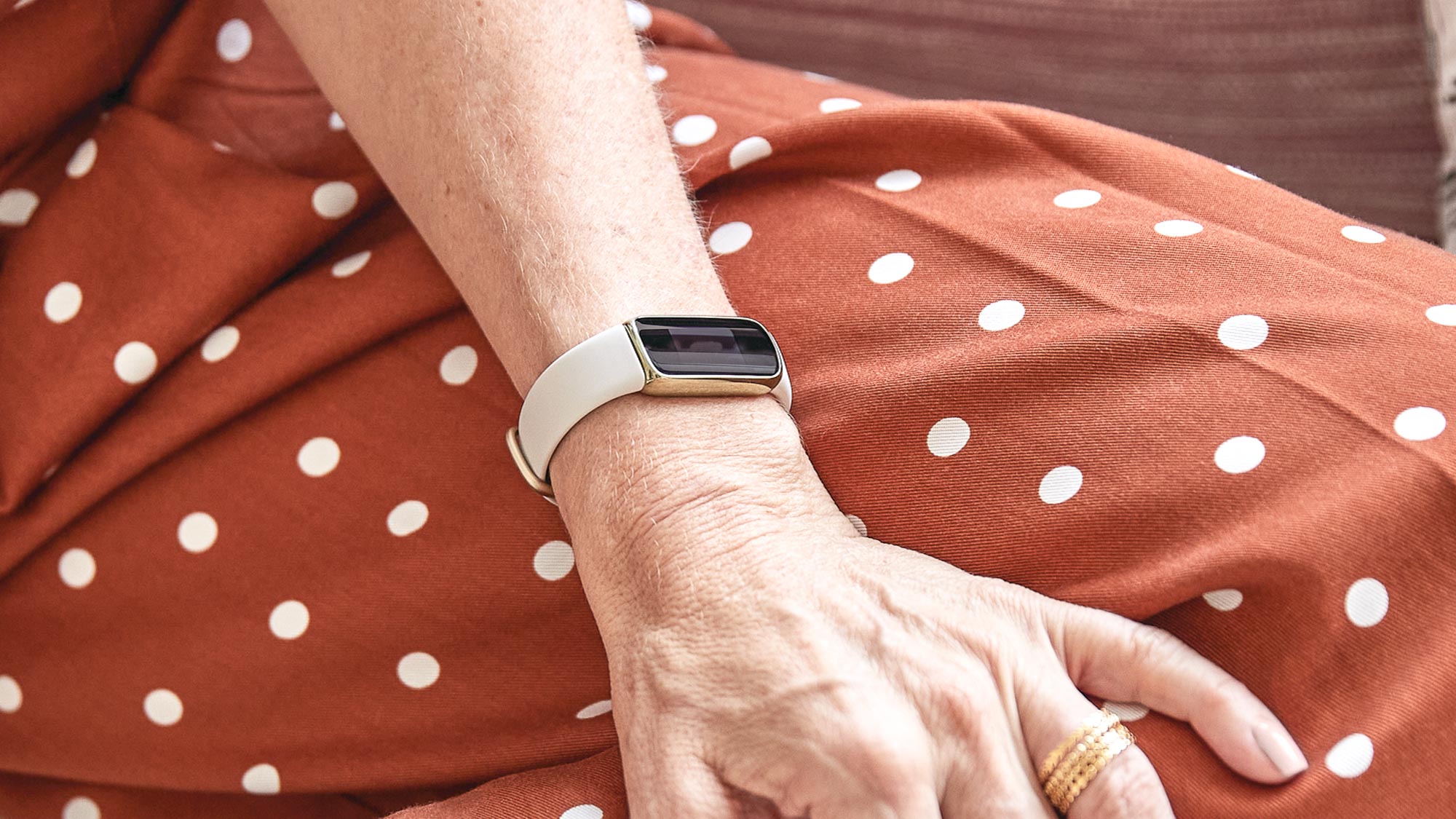
That said, for the price, I wish it had a few more tricks up its shiny sleeve. Compared to the Fitbit Inspire 2, which is $50 less, the Fitbit Luxe has a metallic casing and color screen. The Fitbit Charge 4, which costs the same as the Luxe, has both GPS and NFC, making it a more complete fitness tracker. But if you’ve been waiting for a fancy-feeling fitness tracker that won’t clash with your fine jewelry — and can be worn from the gym straight to work or dinner — look no further than the Luxe.
For all the latest Technology News Click Here
For the latest news and updates, follow us on Google News.
